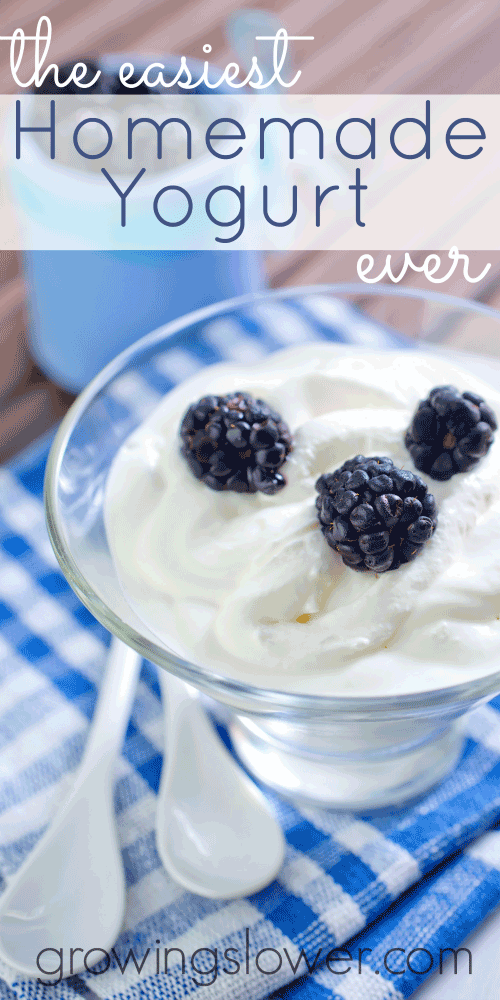Find out the easiest method for how to make yogurt from scratch. Making my own yogurt saves me over $220 a year and using this trick, it is so easy to make!

How I Save $18.37 per month in just 5 minutes
My family eats about 64 servings of yogurt per month. That’s about one serving each per day for my husband and I, since my son is dairy free and we haven’t introduced dairy to the baby yet.
If I were to buy organic, pastured yogurt ready made, the cheapest I’ve found it for is $3.55 per quart, or $28.40 for a month’s supply. However, I can buy grass fed organically raised milk for $4.99 per gallon, or $9.98 for the month’s supply, and use it to make my own yogurt. I save $18.37 per month.
If you prefer not to use grass fed or organic, you can replace conventionally raised yogurt with conventionally raised milk and you’ll see a proportionate amount of savings.
How to Make Yogurt from Scratch (one is easy, one is even EASIER!)
What’s that you say? You just can’t add one more thing to your already full plate? I totally understand! Luckily, making homemade yogurt is truly one of the easiest things to make at home.
1. Making Homemade Yogurt the Easy Way
- Heat your milk on medium-low heat to 180 degrees on the stove or in a crock pot.
- Turn off the heat, and allow it to cool back down to 110 degrees.
- Stir in your starter culture (use about 1/2 cup starter per quart of milk)
- This is the tricky part. Cover pot and place it in a warm place so that it maintains it’s temperature of 110 degrees over night. You can do this by wrapping the slow cooker in a towel or placing the whole pot in a warm oven, or setting it on a heating pad.
- Refrigerate in the morning.
(These instructions are based on those on page 85 of Nourishing Traditions. affiliate)
This works, and I have made my own yogurt this way for years. However, it can be a little temperamental and nerve-wracking to make sure you maintain that warm temperature all night long.
A note on choosing a yogurt starter: You can use any plain yogurt that has “live and active cultures” as a starter. We have used Nancy’s brand in the past, but it has a pretty tangy flavor. I prefer to use Plain Cream Top Brown Cow natural yogurt as a starter. After that first batch, you will use some of your last batch of yogurt as the starter for your new batch of yogurt, so you only have to buy it once. If you want to get really crazy, there’s even a way to make your own yogurt starter using trimmings from chili peppers!
2. Making Homemade Yogurt the EASIER Way
- Pour milk into a plastic or glass container.
- Stir in your starter culture.
- Leave it sitting at room temperature for about 12 hours.
- That’s it!
I recently found a new kind of starter culture that cultures at room temperature (70 to 77 degrees). No cooking the milk to a certain temperature, no trying to keep your oven slightly warm all night, no buying a puny yogurt maker that holds about one days worth of yogurt! This yogurt culture totally rocks!!
If you want to try this method for homemade yogurt, look for a “Mesophilic Yogurt Culture.” You’ll probably need to order this online or get it at a local natural foods store. After making one batch with your starter, you can reuse your own yogurt as a starter again and again.
I got my yogurt starter from Cultures for Health. If you’re in Canada, check Culture Mother. There are several options depending on how you like your yogurt (greek, mild, etc.) but I picked the Flimjolk yogurt culture that is custard like and popular with kids. The regular price of the starter culture is $12.99. It’s more expensive than buying regular store bought yogurt as your starter. However, I save $220 a year by making my own yogurt. For me, the cost of the culture is well worth the convenience in this case.
